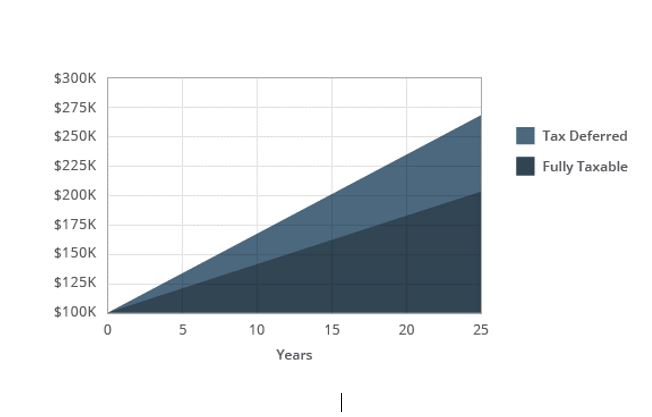A key component of financial and retirement planning is safety – and part of keeping your assets protected is ensuring that your loved ones won’t have to struggle financially when you are gone.
One of the best strategies for doing so includes purchasing life insurance. The proceeds from these policies can be used for a wide variety of needs, such as replacing lost income and paying off debts (possibly even including a mortgage balance).
There are many different types of life insurance policies to choose from, though, and not all of them can cover the same needs. But if you want a steady plan that provides protection, tax advantages, and guarantees, whole life insurance could be a viable option.
As with other financial “tools,” there can be both advantages and drawbacks with whole life, depending on the specific objectives you’re trying to attain. So, it is important to consider whole life insurance pros and cons before making a commitment to purchase a policy.
For more in depth analysis, please see our accompanying article Whole Life Advantages and Disadvantages.
What is Whole Life Insurance and How Does It Work?
Whole life insurance is a type of coverage that offers death benefit protection, as well as a cash value, or savings, component. Once an insured is approved for whole life insurance, the policy will remain in force for as long as the premium is paid.
If the insured dies while the whole life policy is in force, the death benefit will be paid out to one or more named beneficiaries. Death benefit proceeds are usually free of income taxation to the recipient(s).
The funds that are in the cash value of a whole life insurance policy grow tax deferred. This means that there is no tax due on the gain unless or until it is withdrawn, which in turn, can provide more growth.
This continuous growth makes whole life a great option for anyone looking for a true compound interest account because interest can grow on the premium contributions that you make, as well as on prior interest, and on the funds that would have otherwise been lost to taxation each year.
Whole life insurance policyholders may either withdraw or borrow cash from the policy. However, in the early years of a whole life insurance policy, a surrender – or early withdrawal – charge may be incurred if money is accessed before a certain amount of time has elapsed.
Comparison of Fully Taxable and Tax-Deferred Growth
(With all other factors being equal)

The above chart shows the difference in the growth of an account funded with $100,000 growing over 25 years at 4% in a tax deferred versus a fully taxable account. In 25 years, the tax deferred account would grow to $266,583 versus $208,691 in a taxable account with a 25% tax rate, a difference of $57,892.
Term vs Whole Life
Although whole life will initially cost more in premium than a term life policy (with all other factors being equal), the amount of the premium is guaranteed not to go up with the whole life option. This differs from term life insurance which offers only death benefit protection – and no cash value build-up – for a set period of time.
Whole life insurance is often purchased for more permanent coverage needs, such as estate planning and/or income replacement for survivors (versus “temporary” needs that someone would choose term life for, like the payoff of a 30-year mortgage balance or college funding for a child or grandchild).
Please see our article which compares whole life vs term life for more.
Types of Whole Life Insurance Policies
Even though whole life insurance is one of many permanent life insurance policy options, this form of coverage can be broken down even further. Some different types of whole life insurance can include the following:
Participating Whole Life Insurance
Some whole life insurance policies pay dividends to their policy holders. These policies – that are referred to as participating, or “par” – are offered via mutual insurance companies. (Mutual insurance companies are owned by their policy holders, as versus stock insurance companies that are owned by their stockholders).
Dividends are considered to be excess profits of the insurer, and as such, they are treated as a non-taxable return of a portion of the premium. Dividends may be received directly in cash, or alternatively they can be added to the policy’s cash value, or even used for buying additional death benefit coverage. While dividends are never guaranteed, there are some mutual insurance companies that have paid dividends consecutively each year for more than a century.
Non-Participating Whole Life Insurance
Contrast a participating policy with non-participating life insurance, or “non-par” whole life insurance policy, the offering insurance carrier assumes all of the future performance risk. This means that if the cost of future claims has been underestimated by the insurer, the company will make up the difference.
The opposite is true, too, in that if the future claims’ cost has been overestimated, the insurer may retain the difference. Non-participating life insurance policies do not pay dividends.
Limited Pay Whole Life Insurance
With a limited pay whole life insurance policy, the coverage can be “paid up” (and require no additional premiums) over a set period of time. For example, a 7-pay policy will require only seven (annual) premium payments after which there would be no more payments due.
Limited pay whole life policies will typically build up cash faster than a straight life policy (i.e., a policy that requires premiums to be paid throughout the lifetime of the policy).
Single Premium Whole Life Insurance
A single premium whole life insurance policy charges just one up-front premium, after which the plan is fully funded. These policies can build up cash value very quickly because of the large premium that is paid in. The amount of the death benefit will depend on the age and health of the insured (at the time of application), as well as the amount of premium that is contributed.
Some single premium whole life insurance policies allow the insured to access the death benefit for paying long-term care and / or other health-related costs. (These withdrawals will generally decrease the amount of death benefit that is ultimately paid out to the beneficiary).
Modified Whole Life Insurance
Modified whole life insurance allows the policy holder to pay less premium than usual for an agreed upon amount of time. Once the time period has elapsed, the policy’s premium payments will increase to an agreed upon amount, which is typically more than usual for that type of policy, as a type of “tradeoff” for the earlier lower cost.
Graded Premium Whole Life Insurance
Graded premium whole life insurance is a type of modified life insurance that provides for annual increases in premiums for a set amount of death benefit during a pre-determined period of time. The purpose of graded premium policies is to make the initial premium payments more affordable.
Intermediate Premium Whole Life Insurance
An intermediate premium whole life insurance policy is like a non-participating whole life policy, except that it offers adjustable premiums. For example, the insurer will charge a “current” premium that is based on its estimate of investment earnings, mortality, and expense costs.
However, if these estimates change over time, the insurer will adjust the premium accordingly – but the cost will never go above the maximum guaranteed premium that is stated in the policy.
Current Assumption Whole Life Insurance
A current assumption whole life policy is a “hybrid” combination of traditional cash value life insurance and universal life. When this type of policy is initially purchased, the death benefit and the premium will be fixed – but only for a certain period of time. At the end of this time period, these items may be recalculated.
Because there are so many different forms of whole life insurance, it is important to work with an insurance specialist who can guide you towards the best option for your specific needs and objectives.
Other Whole Life Insurance Features Beyond the Death Benefit
While many people think only of the death benefit that is offered with life insurance, whole life policies can provide many additional features, too – and some that can be used while the insured is still alive.
For instance, in addition to the “base” policy, whole life insurance can be further customized to meet specific goals by adding one or more optional policy riders. Some common riders that may be found on whole life insurance include:
- Guaranteed Insurability Rider – A guaranteed insurability rider allows the policy holder to purchase additional death benefit coverage without the need for a medical examination.
- Accidental Death Rider – The accidental death rider pays an additional amount of death benefit if the insured passes away due to an accident. Typically, the insured must die within a certain amount of time (usually within 90 days) after the accident.
- Waiver of Premium Rider – If the insured becomes injured or ill and is unable to work and generate income, the waiver of premium rider allows him or her to stop making premium payments (at least for a period of time) so that the policy will remain in force.
- Family Income Benefit Rider – A family income benefit rider can provide regular monthly income to family members after the insured passes away.
- Accelerated Death Benefit Rider – The accelerated death benefit rider allows the insured to access some – or even all – of the death benefit, penalty-free, while he or she is still alive. This is typically triggered if the insured is diagnosed with a terminal illness or if they must reside in a nursing home for at least a certain period of time (such as 90 or more days).
- Child Term Rider – A child term rider will pay a death benefit if a covered child passes away before they reach a certain age.
- Long-Term Care Rider – With a long-term care rider, monthly payments are made if the insured must receive long-term care services – either in a facility or at home.
Accessing Cash from the Whole Life Insurance Cash Value Component
You can typically access cash from a whole life insurance policy in a couple of different ways. These include withdrawals and loans. If you withdraw money from the cash component, you will incur taxes on any amount that is considered gain.
In addition, if the policy is still within its surrender charge period, you could also be subject to an early withdrawal, or “surrender,” penalty, which can reduce the amount of money that you net by even more. With that in mind, taking direct cash value withdrawals should only be considered as a last resort.
Another option for accessing cash from a whole life insurance policy is through a loan. Although many people are uncomfortable with borrowing money, a life insurance loan could provide several enticing benefits.
For instance, life insurance loans are not taxable. Therefore, you will be able to use 100% of the funds from the loan. Plus, these loans are actually from the insurance company, using the cash in your policy as collateral (versus borrowing directly from the cash value). Because of that, 100% of your funds will still be generating interest.
As an example, if you have $100,000 of cash value in a whole life insurance policy, and you borrow $50,000, interest will continue to be generated on $100,000. As an added bonus, even though the insurer will charge interest on the loan, if the funds are not fully repaid at the time of the insured’s passing, the remaining balance will be paid off using the death benefit proceeds (with the remainder of the money then going to the beneficiary).
The Pros and Cons of Whole Life Insurance
There is no financial or insurance vehicle that is right for all investors across the board. But overall, there are some universal pros and cons when it comes to owing a whole life insurance policy.
Whole Life Insurance Benefits
Some of the key benefits of having whole life insurance include:
- Premium is locked in for life
- Guaranteed death benefit coverage
- Principal protection on cash value
- Cash grows tax deferred
- May access cash from the policy
- May be protected from creditors
One of the primary reasons why whole life insurance is attractive is because the premium remains the same throughout the entire lifetime of the policy. This can make it easier to budget for over time.
In addition, while the amount of a whole life insurance premium may be higher than that of a comparable term insurance policy initially, over time, the whole life premium will not increase.
The guaranteed death benefit on a whole life insurance policy means that your loved ones will have a known amount of financial protection in place, regardless of what happens in the stock market, with interest rates, or in the overall economy (as long as the policy’s premiums are paid).
In addition, even though the return on the whole life policy’s cash value is typically low (4-5%), though, due to its tax-advantaged nature, these funds can increase exponentially over time. In fact, compared to other financial vehicles that could generate more growth, if losses are incurred, the end result with the latter could be a lower account value (in addition to more stress and worry).
Take, for instance, an account that fluctuates between generating a 10% gain and incurring a 10% loss each year for ten years. By the end of the tenth year, the value would be roughly 5% less than the amount you initially contributed. This is because whenever there are losses in the mix, the actual return can be adversely impacted.
| End of Year | Gain or Loss | Value of Account |
|---|---|---|
| 1 | 10% | $1,100.00 |
| 2 | (-10%) | $990.00 |
| 3 | 10% | $1,089.00 |
| 4 | (-10%) | $980.10 |
| 5 | 10% | $1,078.11 |
| 6 | (-10%) | $970.30 |
| 7 | 10% | $1,067.33 |
| 8 | (-10%) | $960.60 |
| 9 | 10% | $1,056.66 |
| 10 | (-10%) | $950.99 |
| End of Year | Guaranteed Interest Rate | Value of Account |
|---|---|---|
| 1 | 4% | $1,040.00 |
| 2 | 4% | $1,081.60 |
| 3 | 4% | $1,124.86 |
| 4 | 4% | $1,169.86 |
| 5 | 4% | $1,216.65 |
| 6 | 4% | $1,265.32 |
| 7 | 4% | $1,315.93 |
| 8 | 4% | $1,368.57 |
| 9 | 4% | $1,423.31 |
| 10 | 4% | $1,480.24 |
In some states, cash value life insurance is protected from creditors, including bankruptcy. This protection may include both the death benefit and the funds that are in the cash component. In some cases, the amount of this protection is capped at a pre-set minimum, while in others it can be unlimited.
Items to Consider Regarding Whole Life Insurance Policies
Although whole life insurance can provide numerous benefits – both before and after the insured passes away – there are some items to consider before you make a long-term commitment to purchasing this type of coverage.
Fixed Premium
One item is the amount of the premium. A whole life insurance policy’s premium is typically higher than the premium charged on a comparable amount of death benefits from a term life insurance. It is important to keep in mind, though, that term life insurance expires after a pre-set period of time, such as 10 years or 20 years.
So, if you want to renew the term life insurance, the premium could be significantly increased going forward because it will be based on your then-current age and health condition. Plus, if you acquire a serious health issue, it is possible that you won’t qualify to renew the policy at all.
As long as the premium is current on a whole life insurance policy, though, the plan will remain in force – even as the insured ages and regardless of whether they contract a health condition that would otherwise deem them uninsurable.
Long Term Commitment
You should also consider the liquidity of a whole life insurance policy. For instance, depending on how your policy is designed, during the first several years that the plan is in force, much of the premium will go towards paying for the cost of insurance (versus into the policy’s cash value).
In addition, whole life insurance policies typically have surrender charges for the first several years that the plan is in force. That means you could end up owing taxes and penalties if you withdraw more than your basis or if you cancel the policy altogether. Because of that, it is important to ensure that purchasing whole life insurance is a long-term financial commitment.
Must Qualify
As with most other types of insurance, the insured on a whole life policy must qualify for the coverage at the time of application – and the premium amount is based on the insured’s age and health condition at that time. Therefore, it is best to apply for a policy sooner rather than later, as you could risk paying a higher premium, or even being denied for the coverage altogether.
Pros and Cons of Whole Life Insurance
| Whole Life Insurance Advantages | Whole Life Insurance Disadvantages |
|---|---|
| The coverage doesn't "expire" (provided that the premium is paid) | Premium is usually higher than term life insurance with the same coverage (at least initially) |
| Premium typically doesn't increase over time | Not 100% of your cash value is liquid during the early years |
| Guaranteed interest rate on cash value | The insured must qualify for the policy |
| Cash value grows tax-deferred | Policies can be more complex than basic term life insurance coverage |
| May pay dividends | Dividends are not guaranteed (or even available) on some policies |
| Principal is protected in any type of market or economic environment | In a traditional whole life policy, lower return on cash value compared to the potential growth on other products |
| May access cash via withdrawals or loans | |
| Death benefit is income tax-free to the beneficiary(ies) | |
| Could add additional riders to "customize" the policy for specific needs | |
| May be protected from creditors |
Should You Add a Whole Life Insurance Policy to Your Financial Plan?
While whole life insurance isn’t suitable for everyone, it could be a good fit if you want to:
- Ensure that the coverage will remain in force, even if you become ill or injured (i.e., if you are rendered uninsurable) in the future
- Build up tax-deferred cash value that can be used for paying off higher-interest debt, replacing lost income, taking a vacation, buying real estate, or supplementing future retirement income
- Add to your tax-advantaged savings – even if you have “maxed out” the annual contribution to other qualified savings options such as an IRA (Individual Retirement Account) and / or employer-sponsored retirement plan
- Be assured that your premium will not increase over time
- Plan ahead for an unknown time period
- Fund business succession needs, such as a key person life insurance strategy
How to Find the Whole Life Insurance Policy that is Right for You
There are many “moving parts” involved when shopping for whole life insurance. In addition, while these policies are often structured similarly, they can also offer different features. So, it can help to have a “guide” with you who can help sort out which option(s) may be right for you and your specific needs.
A life insurance specialist could also assist with picking insurance carriers that may be more apt to approve you for coverage if you have certain health issues and/or you are seeking certain add-ons to the policy.
At Insurance and Estates, our primary focus is on helping our clients protect what they have worked for and ensuring that their loved ones won’t suffer financially in the event of the unexpected.
So, if you would like to chat with one of our life insurance specialists about adding more flexibility and protection to your financial plan, feel free to reach out to Insurance & Estates by calling (877) 787-7558 or by sending us an email through our online contact form at info@insuranceandestates.com. We look forward to assisting you.







